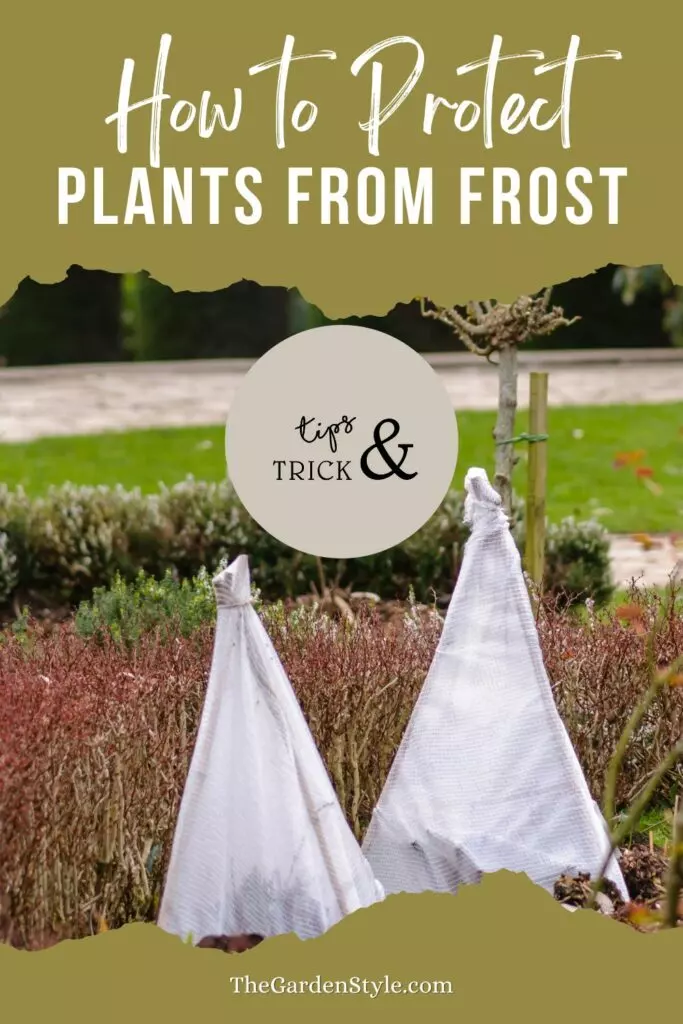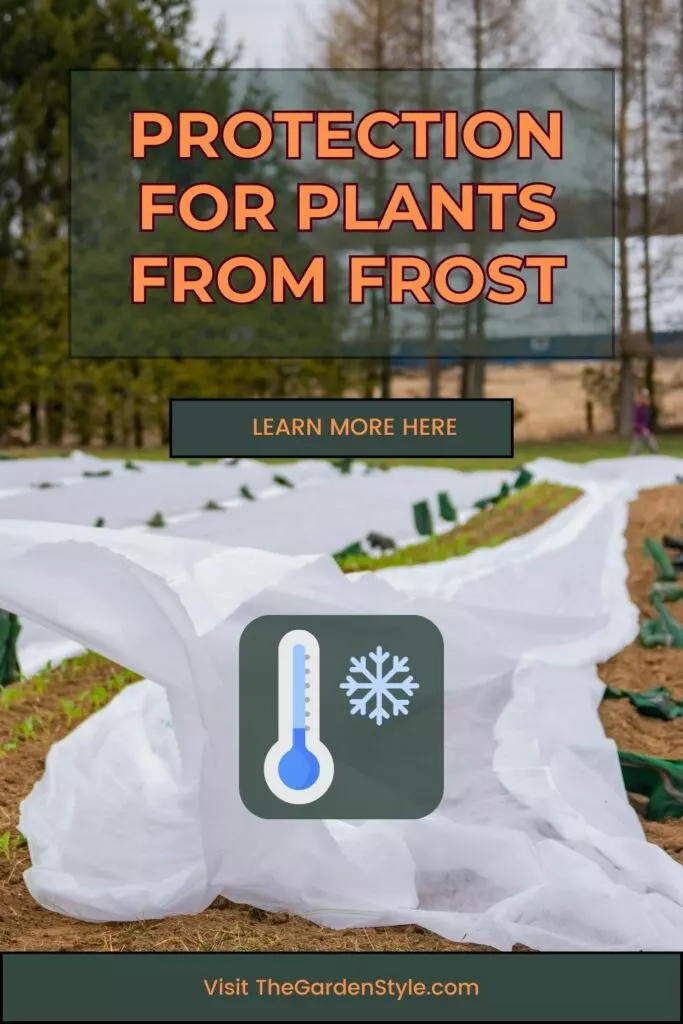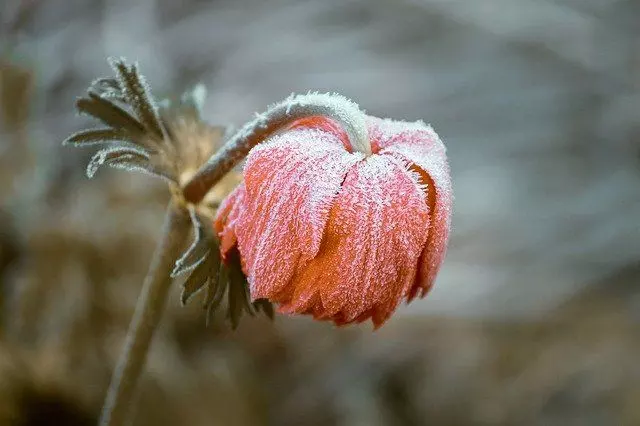When the cold starts, it is crucial to know how to protect plants from frost. Protecting plants from frost is essential to ensure their survival. Frost occurs when the temperature drops below freezing, causing ice crystals to form on the plant’s surface. These ice crystals can damage the plant’s cells, leading to wilting, browning, and even death.
It’s essential to understand what temperature levels can cause damage and what methods can be used to prevent garden damage from frost. There are many ways to protect plants from frost, and most of them are very economical and easy to implement.
Table of Contents
What Should I Cover My Plants with To Protect from Frost?
When it comes to protecting your plants from frost, covering them is a great option. But what should you cover them with? Here are some options for your garden:
Blankets or Sheets
You can use blankets or sheets to cover your plants. Just make sure they are not too heavy and are secured in place so they don’t blow away. You can also use stakes to hold them up and create a tent-like structure.
Tarps
Protect your plants from frost using tarps. However, they can be heavy and may damage delicate plants. If you choose to use a tarp, make sure it is not touching the plants directly and is secured in place.
Frost Cloth
Frost cloth is specifically designed to protect plants from frost. It allows air and moisture to pass through while still providing insulation. It can be draped over plants and secured in place with stakes or clips.
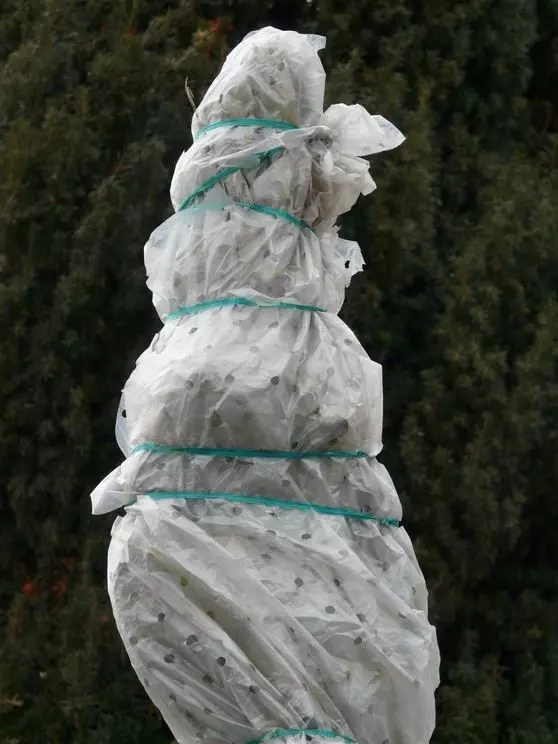
- 【Why Use Plant Covers Freeze Protection?】Not using plant covers in winter can damage plant branches,so that affect the whole of a plant. Cold currents, strong winds, rainfall, frost, and freezing in winter can cause damage to plants and affect flower bud differentiation, leading to a decrease in the next year’s harvest.
- 【The Function Of Plant Cover】Keep warm for your plants to resist severe cold, reduce the damage caused by frost and cold, effectively regulate and maintain the temperature and humidity plant inside the membrane, allowing your plants to spend a warm winter. Covering plant protection also can reduce plant damage caused by diseases and pests,reduce plant withering, improve your plant survival rate to increase yield and income.
Plastic
You can use plastic to cover plants, but it can trap moisture and cause damage. If you choose to use plastic, make sure it is not touching the plants and ensure you hold it in place.
Place a Layer of Mulch
Use mulch to insulate the soil, retaining heat and moisture in your garden. It is also beneficial for protecting the root system of each plant from cold and frost. Sometimes, very low temperatures are not what damage the plant; the damage comes from the freeze-thaw cycle that affects the soil. Also, cold soil can prevent water from being easily distributed. Learn more about different types of mulches.

Indoor Protection
If you have delicate plants that cannot withstand the cold, consider bringing them indoors. Place them near a window where they can still get sunlight but away from any drafts or cold air.
The table below summarizes the pros and cons of different types of materials you should use to cover your plants when cold weather and low temperatures arrive.
| Covering Option to Protect Plants from Frost | Pros | Cons |
| Blankets or Sheets | Easy to find and use | It can be too heavy and damage plants |
| Tarps | Provides good coverage | It can be heavy and damage delicate plants |
| Frost Cloth | Specifically designed for frost protection | It may be more expensive than other options |
| Plastic | Provides good coverage | It can trap moisture and cause damage |
| Place a Layer of Mulch | Protect the root system | Only protect the root system |
| Indoor Protection | Provides complete protection | Limits sunlight and may require additional care |
Remember, when covering your plants, make sure to remove the covering once the temperature rises above freezing to prevent damage.
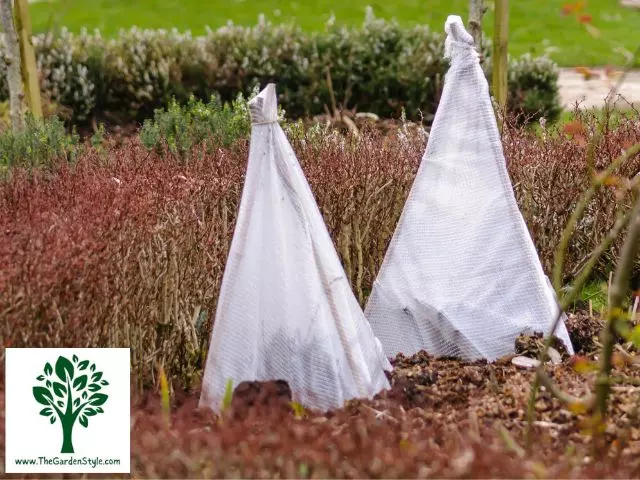
At What Temperature Should You Cover Your Plants at Night?
As a rule of thumb, it is recommended to cover your plants when the temperature drops below 32°F (0°C). However, this can vary depending on the type of plant and its hardiness zone.
It is important to note that covering your plants does not guarantee protection from frost damage. The covering simply traps the heat radiating from the soil and the plant, creating a warmer microclimate around the plant.
Suppose you have plants in pots and planters. In that case, it is essential to cover them as they are more susceptible to frost damage due to their limited root system. You can use blankets, sheets, or frost cloths to cover your plants, making sure to secure the cover to the ground to prevent cold air from seeping in.
After covering your plants, remember to eventually remove the cover during the day to allow for proper air circulation and prevent the build-up of moisture, which can lead to fungal diseases.
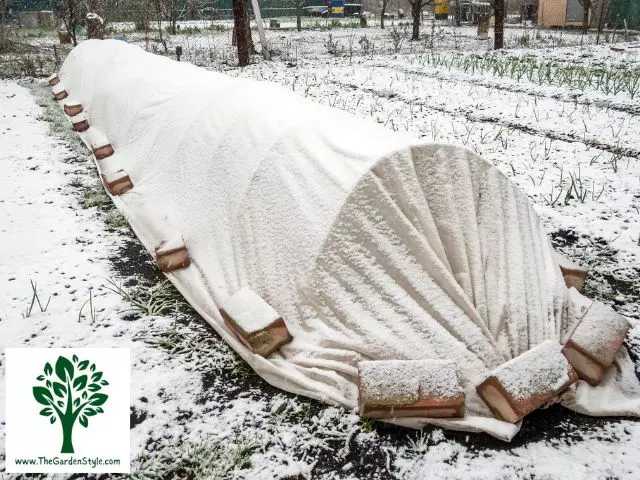
How to Protect Plants from Frost in Pots
As a gardener who has lived in cold climate zones, I understand the importance of protecting plants from frost. That is especially crucial for potted plants or when you grow plants in containers since they are more vulnerable to cold temperatures compared to those planted in the ground. Here are some tips on how to protect plants from frost in pots:
1. Move Pots to a Sheltered Area
One of the easiest ways to protect potted plants from frost is to move them to a sheltered area. That can be a garage, a shed, or any other covered area that can shield the plants from the cold. If you don’t have a sheltered area, you can group the pots all together and cover them with a tarp or blanket.
2. Cover Pots with Frost Cloth or Blankets
Another cheap way to cover plants from frost is to use frost cloth or blankets. These materials are readily available in garden centers and can be easily draped over the plants. However, make sure that the cloth or blanket doesn’t touch the leaves or branches of the plants, as this can cause damage.
3. Use Bubble Wrap
Bubble wrap is another effective way to protect plants from frost. Simply wrap the pot with bubble wrap and secure it with tape. That will provide an extra layer of insulation and help keep the soil and roots warm.
4. Water the Plants
Watering the plants before a frost can also help protect them. Wet soil retains more heat compared to dry soil, which can help keep the roots warm. However, make sure not to overwater the plants, as this can lead to root rot. Learn more about the best time to water plants.
Here’s a table summarizing the gardening tips on how to protect plants from frost in pots:
| Gardening Tips | What to Do with Your Potted Plants |
| Move Pots to a Sheltered Area | Move the pots to a covered area to protect them from the cold. |
| Cover Pots with Frost Cloth or Blankets | Use frost cloth or blankets to cover the plants. |
| Use Bubble Wrap | Wrap the pots with bubble wrap to provide an extra layer of insulation. |
| Water the Plants | Water the plants before a frost to help keep the roots warm. |
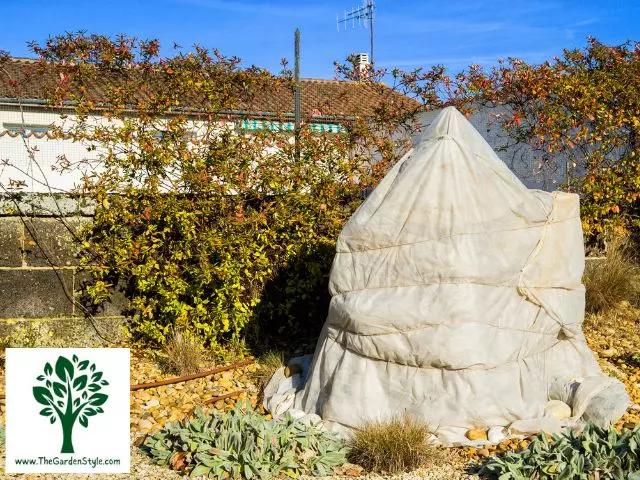
Frost Proof Planters
It is so familiar to find winter planters cracked on the first frost, especially if you watered on the previous day, right? Frost-proof planters are containers designed to withstand freezing temperatures without cracking or being damaged. Some materials used for planters are handy in colder climates because they are frost-proof and will not be damaged when temperatures drop significantly during winter months. Here are some materials for frost-proof planters:
| Concrete | Durable and slows heat conductivity. Concrete planters provide excellent resistance against freezes and thaws. |
| Plastic | Polyethylene and polypropylene are insulative. Cheaper options like heavy-duty resin retain some warmth. Air pockets provide extra insulation. |
| Wood | The wood of all types has natural insulating properties. Fir, redwood, or cedar resist decay and stand up well to moisture. |
| Insulated Metal | Hollow metal or metal-composite planters with inner walls filled with polyurethane foam insulation provide planter box warmth. |
| Fiberglass | Lightweight yet durable. Resists weathering and provides effective insulation around roots. |
| Ceramic/Terracotta | It is porous, so it needs sealing to make frost-proof. But thick walls hold warmth when kept dry during winter months. |
When purchasing planters labeled as “frost-proof,” it’s essential to check the manufacturer’s specifications and recommendations to understand the temperature range they can withstand and any specific care instructions to maintain their durability in cold weather.
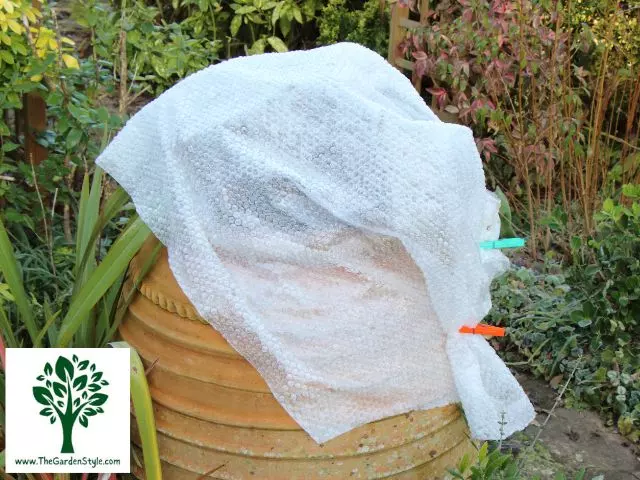
- Grow beautiful plants and flowers: Each planter measures 11.75″ in diameter (outer top, 10 inches inner top diameter) with a 6″ outer base diameter (5.5 inches inner base diameter) x 9.5 inches tall (9″ inner H). Each planter weighs 11 lbs per planter. It has a 1″ drainage hole and 7.6 quart (1.9 gallon) soil capacity.
- Designed for beauty and strength: These ceramic pots are hand-painted with a rich, glazed finish and placed in a kiln for classic, shining beauty. Please note, variations in color may occur due to manual glazing and the unique kiln firing process.
- Includes 2 planters: Use this set of 2 flower pots for your favorite herbs, greens, flowers, or vegetables.
Using Plastic Bottles to Protect Plants from Frost
Protecting young plants from frost with plastic bottles can be an effective method to create a microclimate that shields them from low temperatures.
Materials Needed:
- Plastic bottles (2-liter soda bottles work well)
- Scissors or a craft knife
- Wooden stakes or bamboo sticks (optional)
Select Suitable Bottles: Choose plastic bottles that are large enough to cover the entire young plant. Two-liter soda bottles are commonly used for this purpose.
Prepare the Bottles: Remove the label and cap from the plastic bottle. Rinse the inside thoroughly to remove any residue. Cut off the bottom of the bottle using scissors or a craft knife. You’ll be left with a cylinder.
Insert a Stake (Optional): If your plants are not strong enough to support the plastic bottle on their own, insert a wooden stake or bamboo stick into the soil next to the plant. Make sure the stake is tall enough to provide support as the plant grows.
Place the Bottle: Carefully place the cut bottle over the young plant, ensuring that it covers the entire plant and is pushed slightly into the soil to anchor it. The open end of the bottle should be facing up.
Ventilation: To avoid overheating during the day, especially if temperatures rise, consider creating small ventilation holes near the top of the plastic bottle. This allows for some air circulation.
Remember to remove the plastic bottles during the day if temperatures are mild, as excessive heat can accumulate inside, potentially harming the plants. Monitoring the weather forecast and adjusting your protection measures accordingly is crucial for the well-being of your young plants.
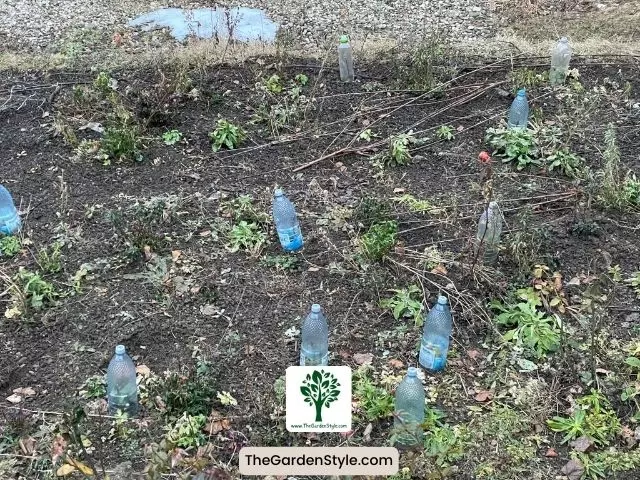
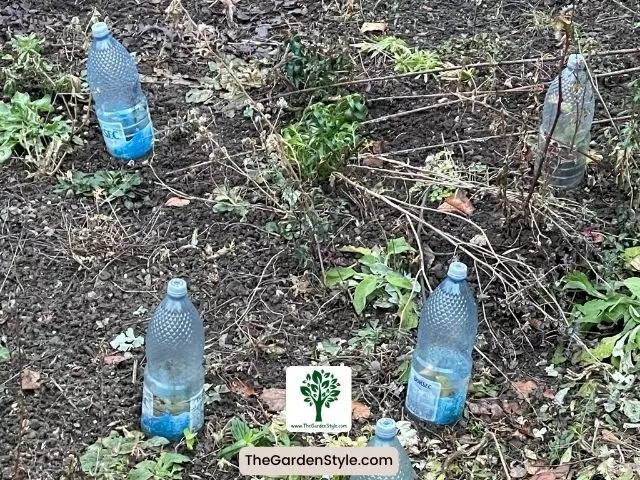
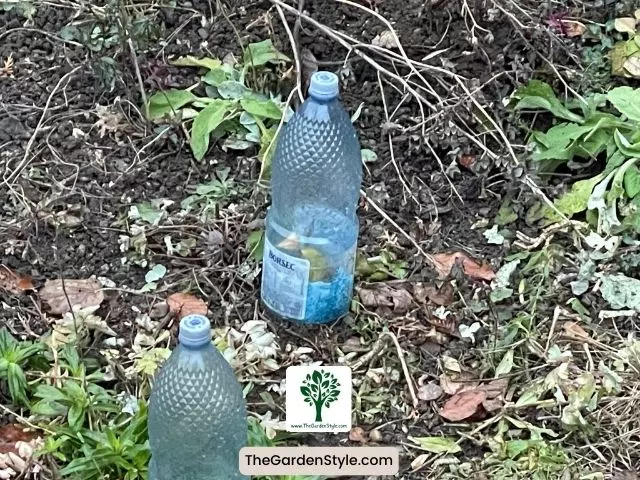
Frequently Asked Questions About Frost Protection for Plants
Should I Cover My Plants At 39 Degrees?
Yes, you should cover tender plants and seedlings if temperatures are going to drop to 39 F or below. Even temps in the low 40s can damage and kill some tropical plants, annuals, and potted plants. Covering gives them extra protection.
Can You Use Plastic Bags to Cover Plants from Frost?
Yes, clear plastic bags work well to cover and shield individual potted plants from frost. Secure the bags loosely around each pot to trap heat but allow airflow so condensation doesn’t build up.
Will Cardboard Boxes Protect Plants from Frost?
Yes, plain cardboard boxes can help protect plants from frost damage. Place the boxes over cold-sensitive plants in the evening, weighing down if needed. The box acts as insulation, trapping ground heat to keep enclosed plants several degrees warmer.
Will a Tarp Protect Plants from Frost?
Yes, securing tarps over plants is an effective way to protect them from frost. The tarp helps retain rising ground warmth and prevents frosty air from reaching the plants. Use stakes or weighed objects to prevent the tarp from touching foliage. Ensure adequate ventilation, too.
If this post about how to protect plants from frost was helpful, please share it:
